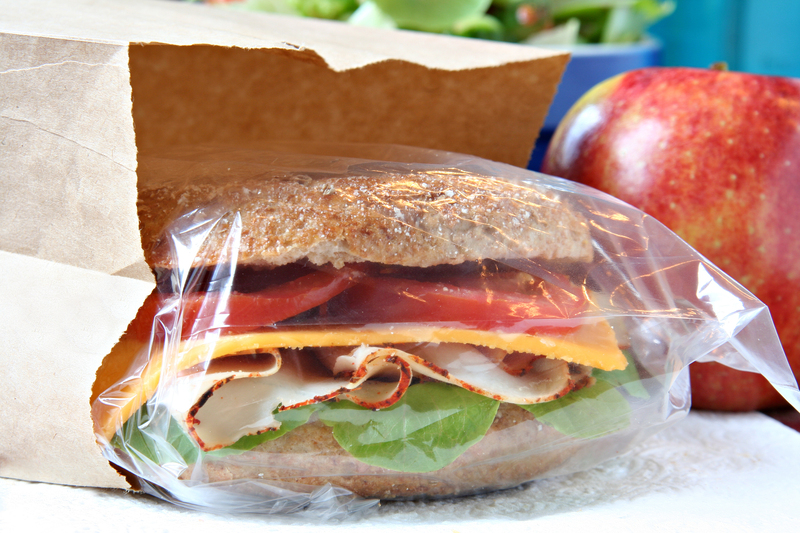Step-by-Step Instructions for Packing Before a Move
Moving to a new home can be an exciting adventure, but the process of packing up your entire life can feel overwhelming. Whether you're relocating across town or moving to another state, having a clear, organized strategy is essential for a smooth transition. In this comprehensive guide, we will provide step-by-step instructions for packing before a move, offering expert tips to keep your process efficient, stress-free, and even enjoyable!

Why Proper Packing Matters
Packing before a move isn't just about putting items in boxes. It's about ensuring your belongings are safe, easy to find, and ready for transport. Proper packing leads to:
- Minimized risk of damage
- Quicker unpacking at your new home
- Less stress on moving day
- Organized belongings for easier setup
Step 1: Create a Packing Timeline
Don't leave packing until the last minute! Start planning as soon as you know you'll be relocating. A timeline helps break down tasks into manageable chunks, ensuring nothing feels rushed.
How to Build Your Packing Schedule
- 6-8 Weeks Before Moving: Declutter, donate, or sell unwanted items.
- 4 Weeks Before Moving: Gather packing supplies and start with rarely used rooms/items.
- 2 Weeks Before Moving: Pack everyday items, label boxes, and confirm moving logistics.
- 1 Week Before Moving: Pack essentials and clean your old home.
Tip: Schedule a specific number of boxes per day to avoid feeling overwhelmed.
Step 2: Gather Essential Packing Supplies
Having the right supplies is a vital part of preparing for a move. Stock up before you start packing to keep your process streamlined.
Must-Have Packing Materials
- Sturdy Boxes: In various sizes for different belongings.
- Packing Tape: Strong and secure for sealing boxes.
- Bubble Wrap and Packing Paper: For protecting fragile items.
- Markers and Labels: For clearly marking box contents and destinations.
- Plastic Bags and Bins: For clothes, electronics, and loose items.
- Scissors and Utility Knife: To cut tape and open boxes quickly.
Step 3: Sort and Declutter Your Belongings
Decluttering before you move not only lightens your load--it saves time, money, and energy. Go through each room and decide what to keep, sell, donate, recycle, or throw away.
Packing Before a Move: How to Decide What to Keep
- Ask: Have I used this in the last year?
- Consider: Will this fit in my new space?
- Evaluate: Sentimental value vs. practical use.
- Donate or Sell: Unwanted but usable items.
Tip: Schedule a yard sale or use online marketplaces to earn extra cash before relocating.
Step 4: Organize Items by Category and Room
Sorting your belongings before you start packing makes everything easier. Use packing before a move checklists to keep your process structured and systematic.
Room-by-Room Organizing Checklist
- Bedroom: Sort clothes, shoes, accessories, and bedding.
- Kitchen: Group by cookware, utensils, glassware, and pantry items.
- Living Room: Organize books, electronics, decor, and furniture.
- Bathroom: Pack toiletries separately for easy access.
- Garage/Storage: Consolidate tools, sports equipment, and seasonal items.
Step 5: Label Everything Clearly
Labeling boxes is crucial to efficient unpacking. Use large, legible writing, and indicate both the contents and the destination room.
Effective Labeling Techniques
- Use Color-Coded Labels: Assign a color to each room.
- Number Boxes: Track total boxes and contents.
- Fragile Notices: Mark delicate items clearly for extra care.
- Detailed Descriptions: Include a basic list of items on each box.
Tip: Create a packing inventory checklist for insurance and personal reference.
Step 6: Protect Fragile and Valuable Items
Special care is needed for items like china, glassware, electronics, and artwork. Proper packing before a move helps prevent damage and loss.
How to Wrap Fragile Items Safely
- Wrap each item individually using bubble wrap or packing paper.
- Use padded dividers for glasses, dishes, and vases.
- Fill boxes fully but don't overpack - fill gaps with towels or crumpled paper.
- Mark boxes "Fragile" on multiple sides.
- Keep valuables and irreplaceable items with you during the move.
Don't forget to take photos of electronics wiring for quick reassembly!
Step 7: Pack Non-Essential Items First
Begin by boxing up possessions you won't need before moving day. This reduces last-minute chaos and ensures you're not scrambling to finish packing the night before your relocation.
- Holiday decorations, out-of-season clothing, and spare linens are great first candidates.
- Extra kitchen gadgets and dining ware you rarely use.
- Books, DVDs, and decor can be packed well in advance.
By focusing on non-essentials first, you leave your daily life as undisturbed as possible until the move is imminent.
Step 8: Tackle the Kitchen and Pantry
The kitchen is notorious for being one of the toughest rooms to pack due to its sheer variety of items. Take it one section at a time:
- Pack unused appliances and bulk pantry items first.
- Sort dining ware by type and wrap with care.
- Use small boxes or bins for glassware and spices.
- Consume or donate perishables before moving day.
- Wrap knives securely in towels and label as "Sharp".
Extra Tip: Place plates vertically in a box (like records) to reduce the risk of breaking.
Step 9: Don't Forget Personal and Important Documents
Documents such as birth certificates, passports, tax files, medical records, and essential contracts should be packed separately and kept with you at all times. Use a folder or a fireproof box for maximum safety.
- Label clearly and store in your personal baggage/car.
- Consider making digital copies for added backup.
- Include chargers, medication, and emergency contacts in your personal essentials bag.
Step 10: Create an Essentials Box for Moving Day
Your essentials box should contain everything you'll need for the first 24-48 hours in your new home. This is your go-to kit as you settle in, saving you from rummaging through multiple boxes.
What to Include in Your Essentials Box
- Bedding and pillows
- Toiletries and towel
- Change of clothes and pajamas
- Basic kitchen supplies: coffee maker, mugs, utensils, snacks
- Phone chargers and electronics
- Medications
- Toilet paper, cleaning wipes, trash bags
- Pet food and leashes (if applicable)
Remember: Clearly mark the box and keep it last on the moving truck for easy access.
Step 11: Enlist Help and Communicate Clearly
Moving is rarely a one-person job. If possible, recruit friends, family, or professional movers to lighten the load. Assign specific roles and convey your packing system to everyone involved. This ensures consistency and reduces confusion when unpacking later.
- Delegate room assignments and tasks.
- Share your color-coded labeling system with all helpers.
- Provide clear explanations for fragile or extra-important items.
Good communication is a cornerstone of any organized move.
Step 12: Conduct a Final Walkthrough
Before moving day arrives, conduct a detailed walkthrough of your old home. Double-check cupboards, drawers, closets, and outdoor storage. Ensure nothing is left behind and that rooms are clean and empty.
- Verify all items are packed and labeled appropriately.
- Check common "forgotten spots" like attics, basements, and sheds.
- Turn off utilities and dispose of remaining trash or cleaning supplies.
Step 13: Load the Moving Truck with Care
Now that you've packed for your move in a systematic, step-by-step fashion, it's time to load the moving vehicle. Pay close attention to weight distribution:
- Place heavy boxes and furniture on the bottom and toward the front.
- Load lighter and fragile items up top and in secure locations.
- Utilize tie-downs and moving blankets to prevent shifting.
- Keep the essentials box and personal documents with you for easy access.
Tip: If you're using professional movers, walk them through your labeling and box system.
Packing Before a Move: Common Mistakes to Avoid
- Overpacking boxes: This increases the risk of breakage and injury.
- Poor labeling: Causes chaos when unpacking in your new home.
- Skipping the declutter step: Leads to more unnecessary packing, heavier load, and a cluttered new space.
- Failing to pack essentials separately: Makes the first night at your new home inconvenient.
- Not protecting breakables: Fragile items are most at risk during relocation.
Packing for a Smooth, Stress-Free Move
Moving doesn't have to be stressful! By following these step-by-step instructions for packing before a move, you'll set yourself up for a successful and organized relocation. Remember, patience and planning are your best allies. Start early, pack systematically, and don't be afraid to ask for help.
Ready for the big day? With these professional packing before a move tips, you'll arrive at your new home calm, collected, and excited for the fresh start ahead.

Frequently Asked Questions About Packing for a Move
When should I start packing before a move?
Begin packing non-essential items 4-6 weeks before your move. The more you can do ahead of time, the less stressful your moving day will be.
What's the best way to pack clothes?
Use wardrobe boxes for hanging clothes, and pack folded items in suitcases or small boxes. Seal and label each box by person or room for easy sorting.
How do I pack electronics?
Pack electronics in their original boxes if available. Wrap with bubble wrap, disconnect cables (take photos beforehand), and cushion with towels or soft items.
Can I pack cleaning supplies and hazardous materials?
Check local and moving company regulations. Many movers won't transport flammable or hazardous materials. Dispose of these safely or move them yourself if necessary.
Conclusion: Your Moving Day Success Starts with Smart Packing
Packing before a move is an art, and with careful planning, you'll make it look easy. Use these step-by-step instructions for packing before a move to transform what could be a frantic experience into a seamless process. Happy moving!



